Full of deep flavor and amazing probiotics, beet kvass has been a traditional Russian and Ukrainian drink for over a thousand years. With only three ingredients, it’s easy to make and will quickly become a new staple in your home.
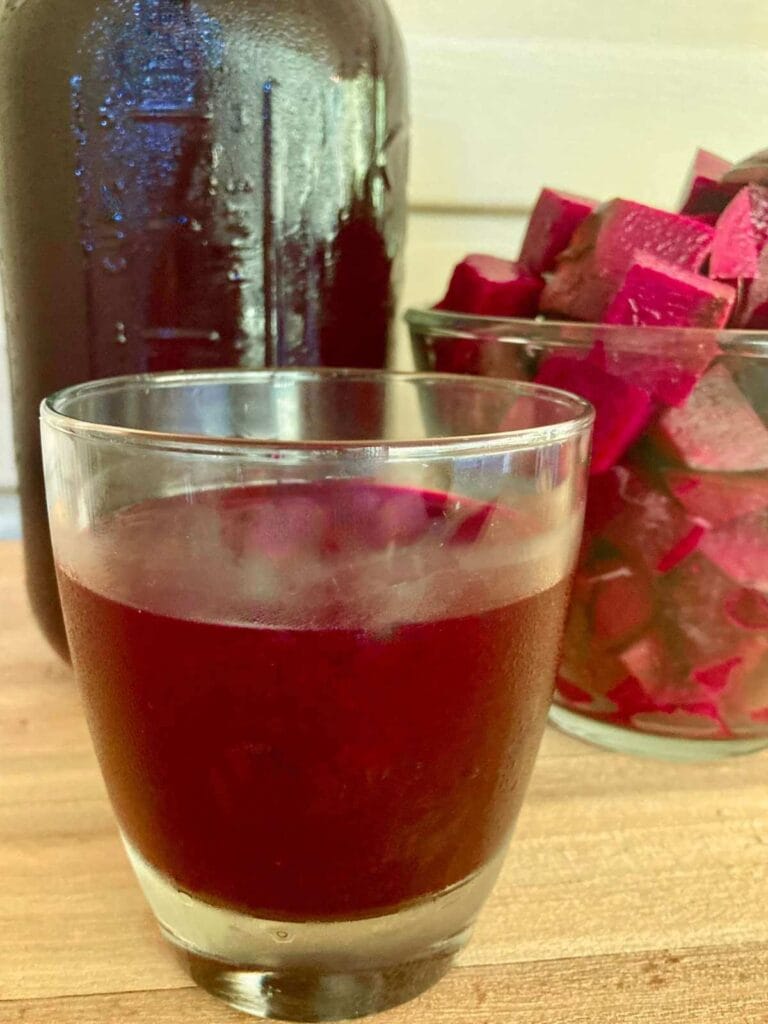
Homemade fermented foods and drinks are some of my favorite things to make. Between yogurt, water kefir, this beet kvass, and whatever else we happen to have going, my kitchen often feels like a laboratory!
While beets aren’t usually the vegetable of choice around here, beet kvass is a whole different thing! It’s so easy and fun to make, and drinking it has become part of my regular routine.
This is a fantastic way to add more probiotics and nutrition to your day!
Why You’ll Love this Beet Kvass Recipe
Easy fermented beverage – This is one of the simplest ferments I know of! Making it regularly is an easy task to add to your routine.
Rich, tangy flavor – Full of wonderful, rich flavor, beet kvass takes the flavor of regular beets up a notch. But even if you don’t typically like eating beets, you may find that you prefer the flavor of kvass.
Full of nutrition – From all the probiotics to the other incredible nutrients, beet kvass is packed with nutrition.
Cheap to make – Buying probiotic supplements or foods can get expensive quickly. Thankfully beet kvass is affordable to make instead.
Traditional recipe – I love making traditional foods that have nourished people for centuries! Beet kvass has been a part of the Eastern European diet for over a thousand years for good reason.
Potent drink – Most people recommend taking only 1/4 – 1/2 cup of beet kvass daily, so one batch can last a while.
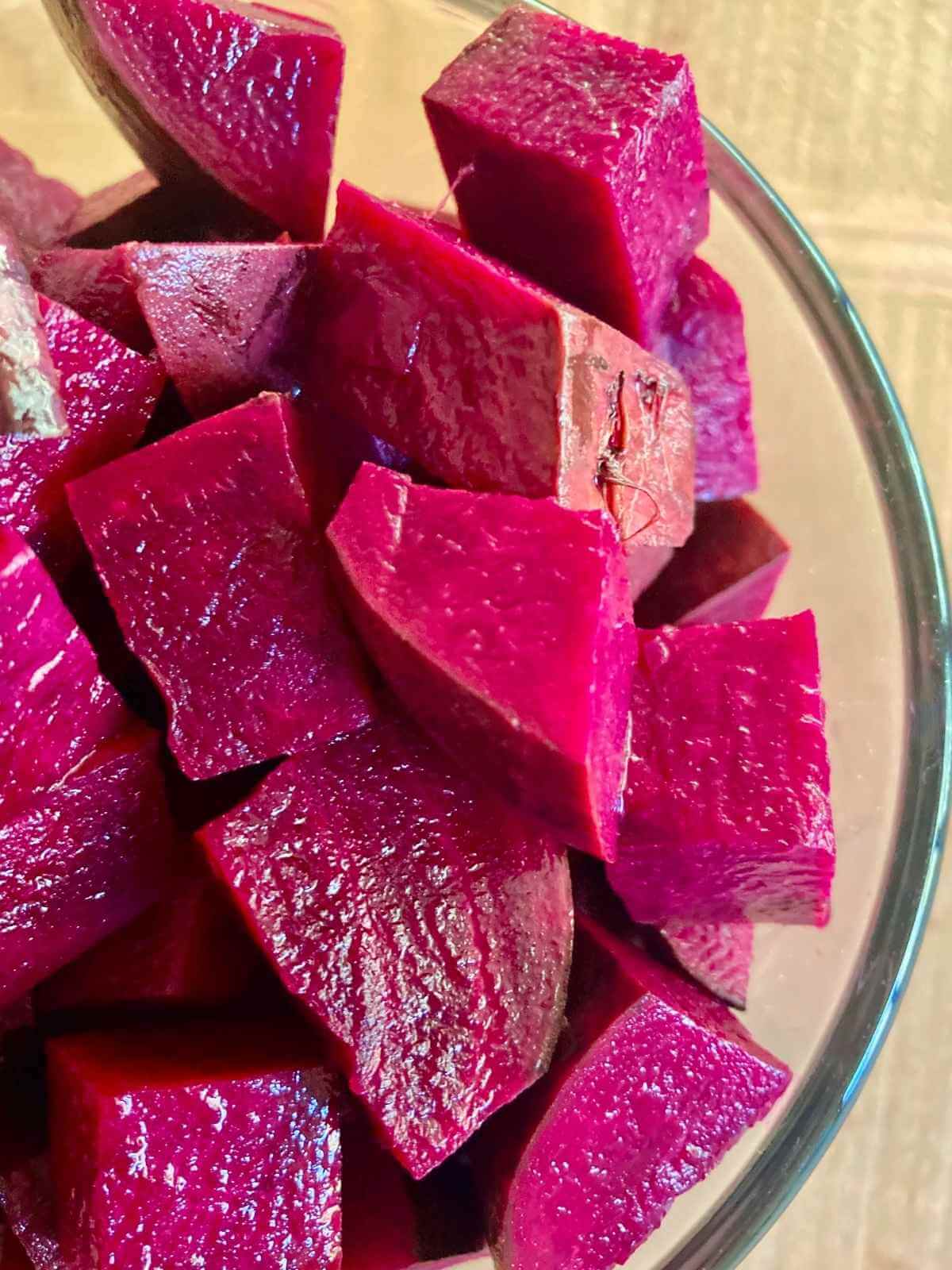
How to Serve Beet Kvass
Typically, beet kvass is drunk cold as a refreshing and healthy beverage. A serving size is usually 1/4 – 1/2 cup, so you don’t need to drink lots. Some people add a squeeze of lemon juice or sprig of mint to their glass to add some flavor variation.
You can also add beet kvass to salad dressings or even alcoholic cocktails!
If the beet flavor is difficult for you to handle, you may prefer to add a small amount to a delicious smoothie.
Can I Use the Beets from Kvass?
Yes, don’t throw them out! Beets that have fermented in kvass are delicious and packed with nutrition. They are slightly milder and tangier than other beets and have a wonderful flavor.
The chopped beets can be used in numerous ways! To retain the most nutrition, eat them raw in salads, with cheese, or thinly sliced as a sandwich topping.
You can also cook the beets, however, the heat will kill the probiotics. They will still have various other nutrients, so I typically use them however my family will eat them.
They are delicious in soups, roasted, or however else you like to cook beets.
How to Store Beet Kvass
Once beet kvass is done fermenting, you can store it in the fridge for up to 6 months. The longer you store it, the more the flavor develops. It will also continue to ferment very slowly, so you may notice that if you leave it for a few months it’s much more tangy and less sweet.
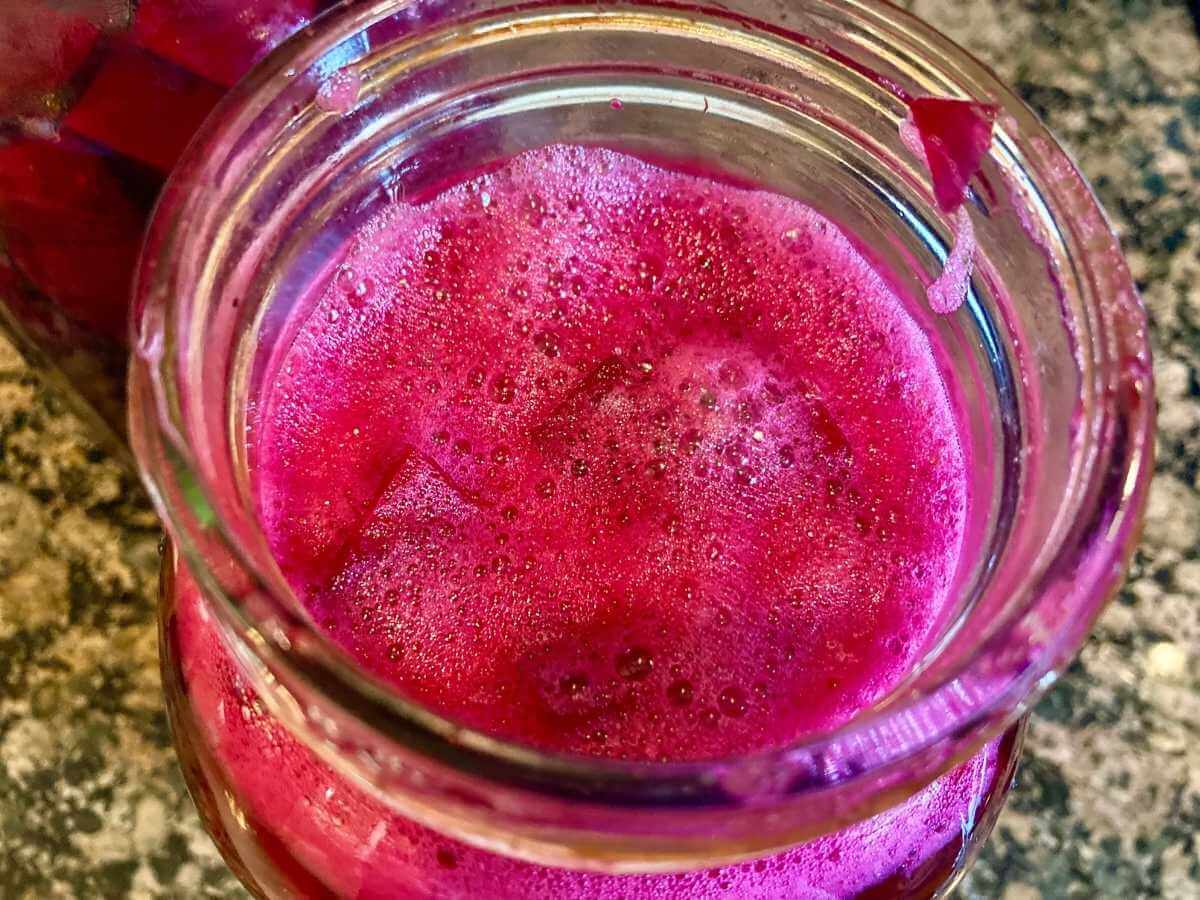
Tips for Making the Best Beet Kvass
Fermenting beet kvass is a simple process, but there are a few things you can do to help your kvass turn out perfectly!
Check the Room Temperature
Most ferments do best between 65 and 75 degrees. If your home is warmer than 75 degrees, wrap a damp towel around the jar to keep it cool.
Use Chemical-Free Water
Chemicals in the water can ruin beet kvass since they can prohibit the growth of good bacteria. For best results, make sure to use filtered water or clean well water.
Use Organic Beets
Since chemicals can harm the fermentation process, it’s best to only ferment organic produce.
Add an Active Starter
While beet kvass can be made without an active starter, it usually turns out best if you have sauerkraut juice or whey with live probiotics. I have personally had more success with sauerkraut juice since whey can have higher amounts of yeast cultures.
Adjust Fermentation Time
Fermentation time can vary based on numerous factors, two of the biggest of which are how active your starter is and the room temperature. Very active starters as well as warmer temperatures make beet kvass ferment faster.
You may find that in the summertime you prefer kvass that hasn’t been fermented as long as in the winter. You may also need to experiment with fermentation times based on the starters you use.
Feel free to taste it every few days to see how it’s coming!
Ferment in a Bowl or on a Pan with Sides
Beet kvass can get pretty bubbly during fermentation! To protect against spills, place the jar on something that can catch any liquid that overflows.
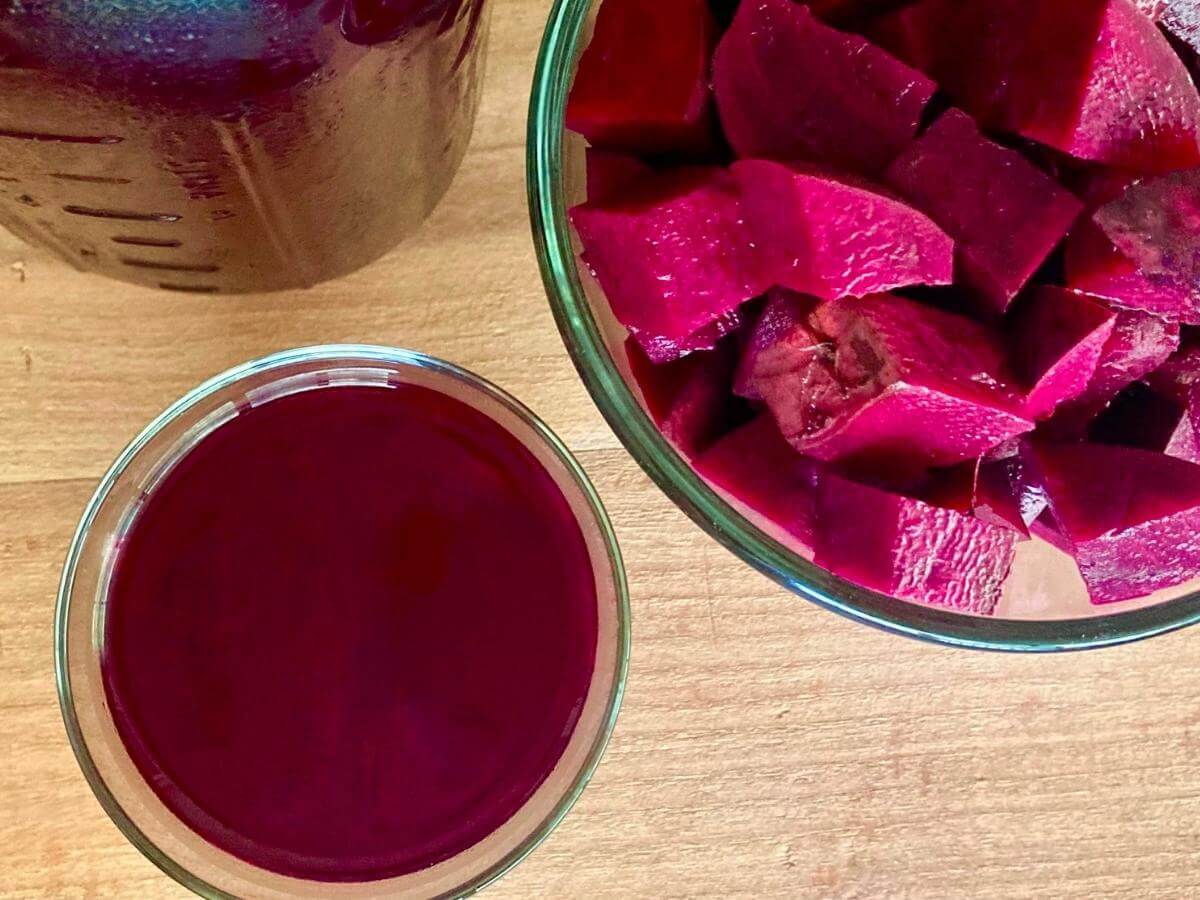
FAQs
Do I need special fermentation equipment? – Not for this beet kvass recipe! All you need is a 1/2 gallon mason jar.
Is beet kvass safe? – Yes, fermentation is one of the safest food preservation methods there are, even safer than canning. If something goes wrong, there will be obvious signs. If the beet kvass looks, smells, and tastes good, it should be safe to eat.
How much should I drink? – Most people recommend drinking 1/4 – 1/2 cup daily. However, especially if you have a sensitive gut, you may want to start with a much smaller amount. Introducing new probiotics to your body can cause uncomfortable detox symptoms, so it’s a good idea to start slower.
Tools You May Need
This post contains affiliate links which means I earn a small commission at no extra cost to you. See my full disclosure here.
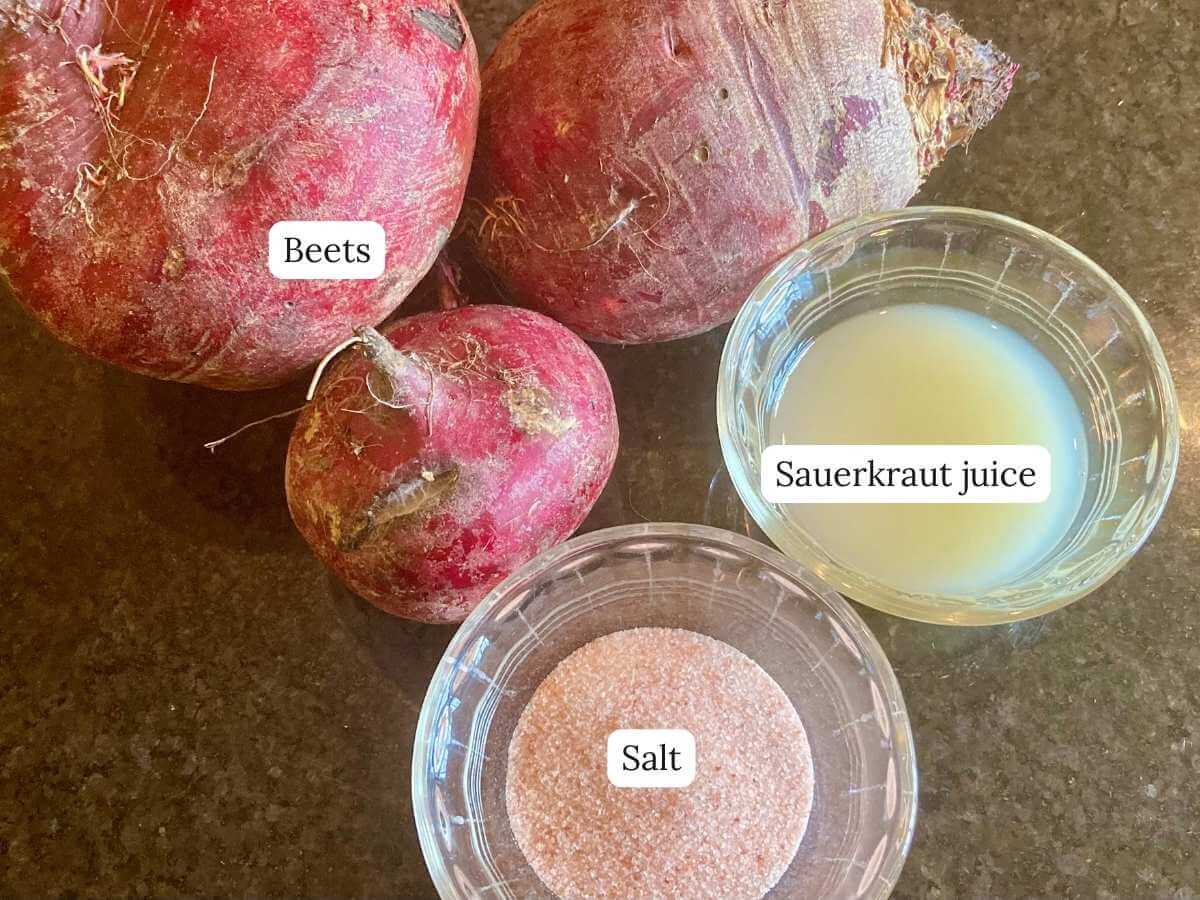
Ingredients for Beet Kvass
Beets – For best results, use high quality, organic beets.
Water – Use either clean well water or filtered water. Certain chemicals added to city water can inhibit fermentation and cause mold among other issues.
Course salt – Sea salt or Himalayan
Sauerkraut juice – To kickstart the fermentation process. If using store bought sauerkraut juice, make sure the sauerkraut gets its flavor from fermentation, not vinegar. If you prefer, you can use whey to start this beet kvass recipe instead.
How to Make Beet Kvass
Start by cutting off the ends and chopping your beets into approximately 1 1/2 inch cubes. If you’re using organic beets, there’s no need to peel them.
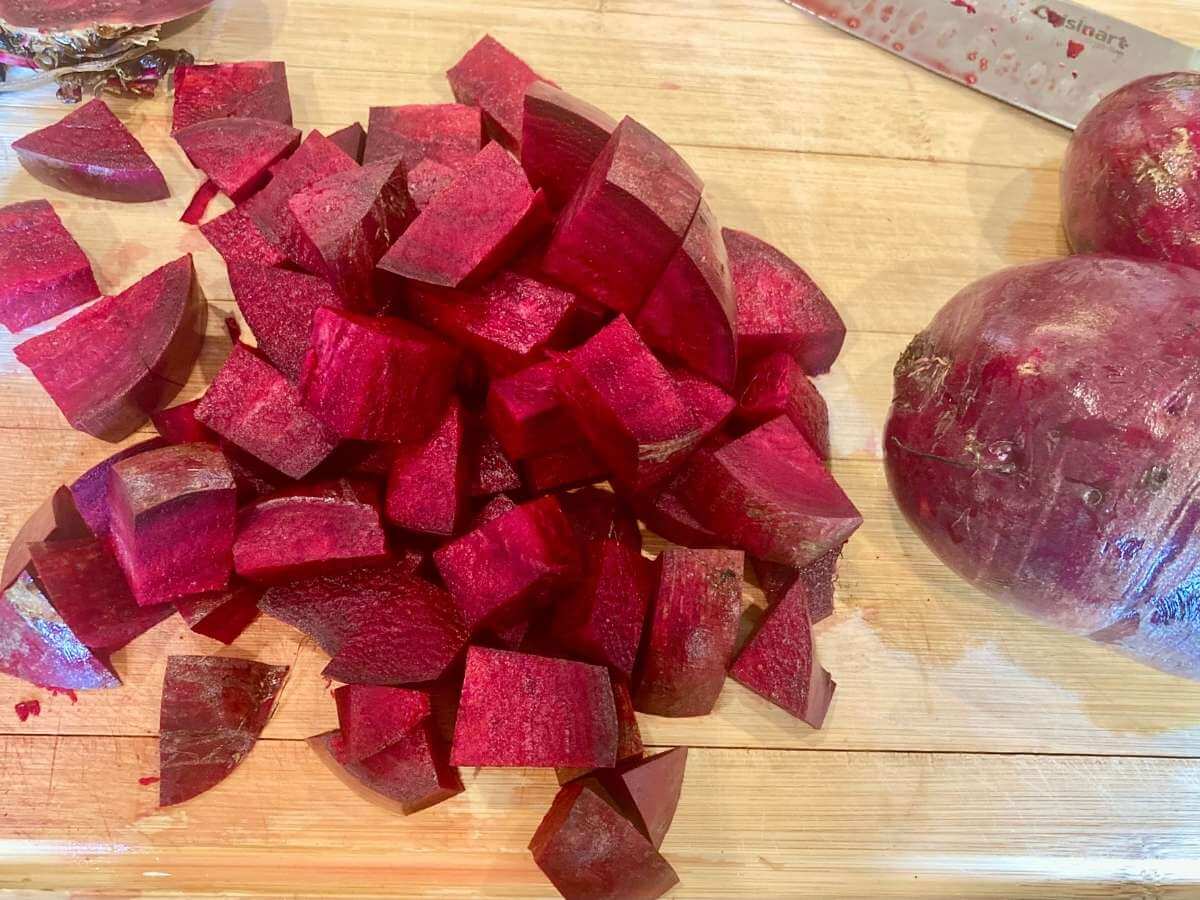
Next, add the beets to the 1/2 gallon Mason jar filling it 1/2 to 3/4 of the way full. Then pour in the sauerkraut juice.
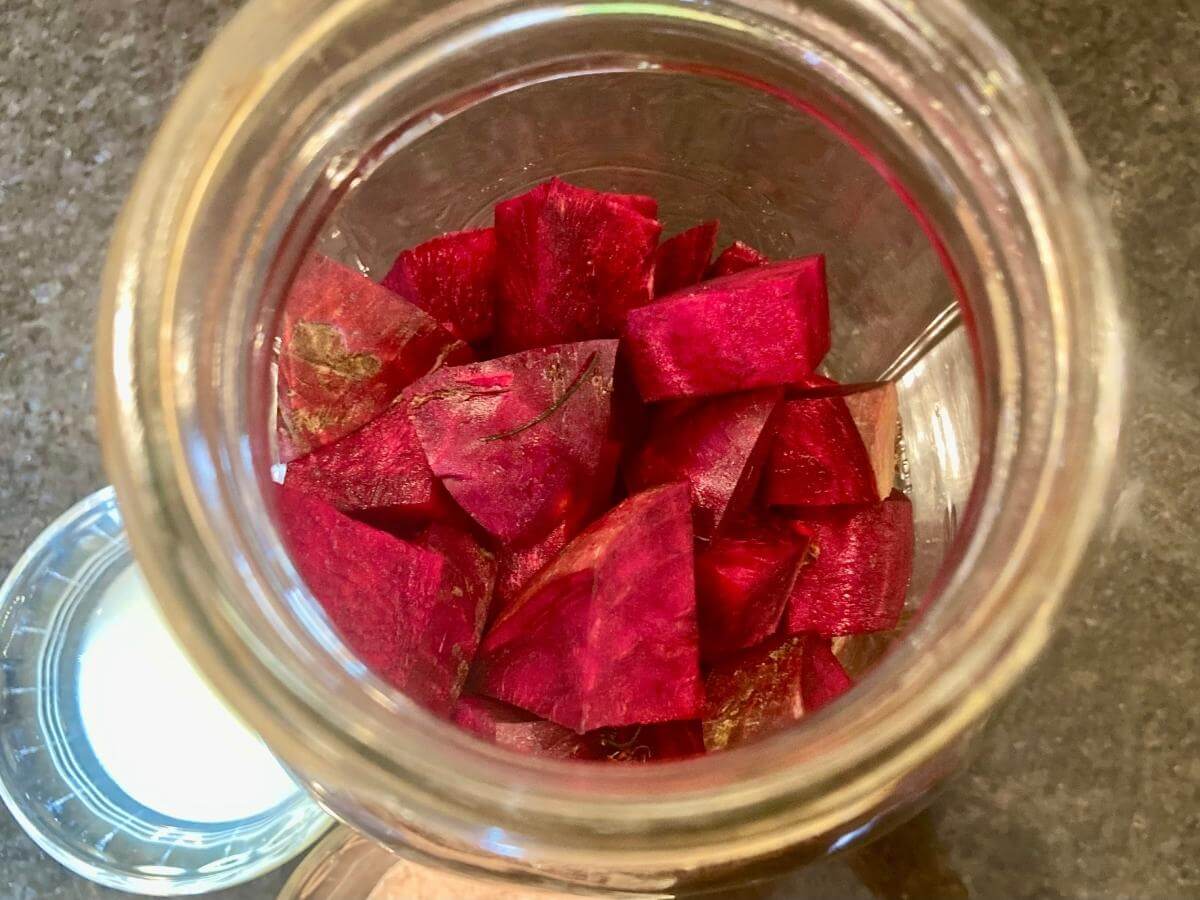
Now you can dissolve the salt in your water and pour it into the jar, leaving about 1-2 inches of room at the top.
Screw on the lid and place the jar in a dark spot at room temperature, between 65 and 75 degrees.
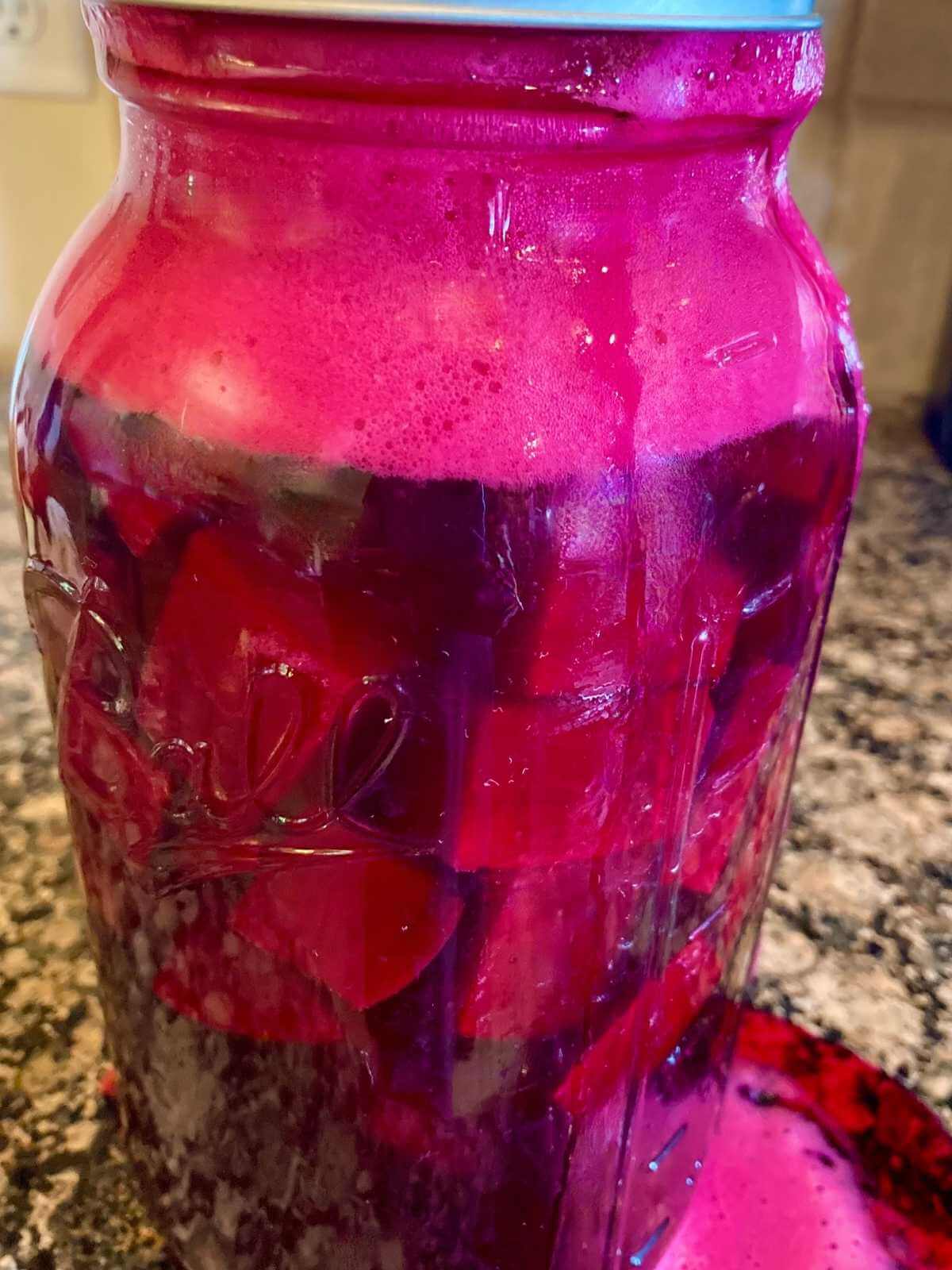
At least twice a day, slightly unscrew the lid to release any pressure caused by the fermentation process. It can take a few days to get going, but make sure to keep checking! If the pressure builds too high, it can leak everywhere or even break the jar.
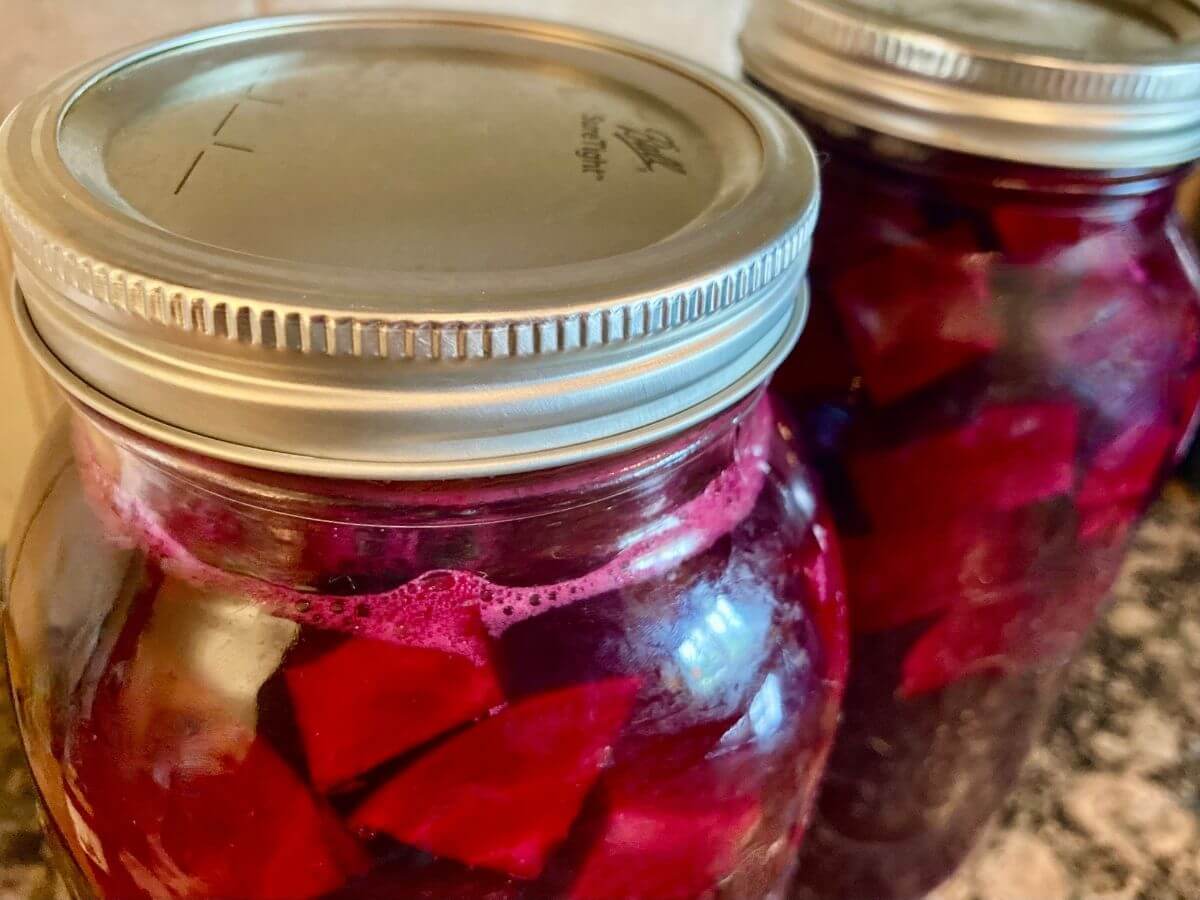
Ferment your kvass for 5-10 days, or until you like the taste. Depending on your flavor preference, you can stop fermenting after just a few days or let it ferment for a few weeks.
Once the beet kvass is done, strain out the beet chunks and place it in the fridge. You can start drinking it right away or let it age for another week in the fridge so the flavors can continue to develop.
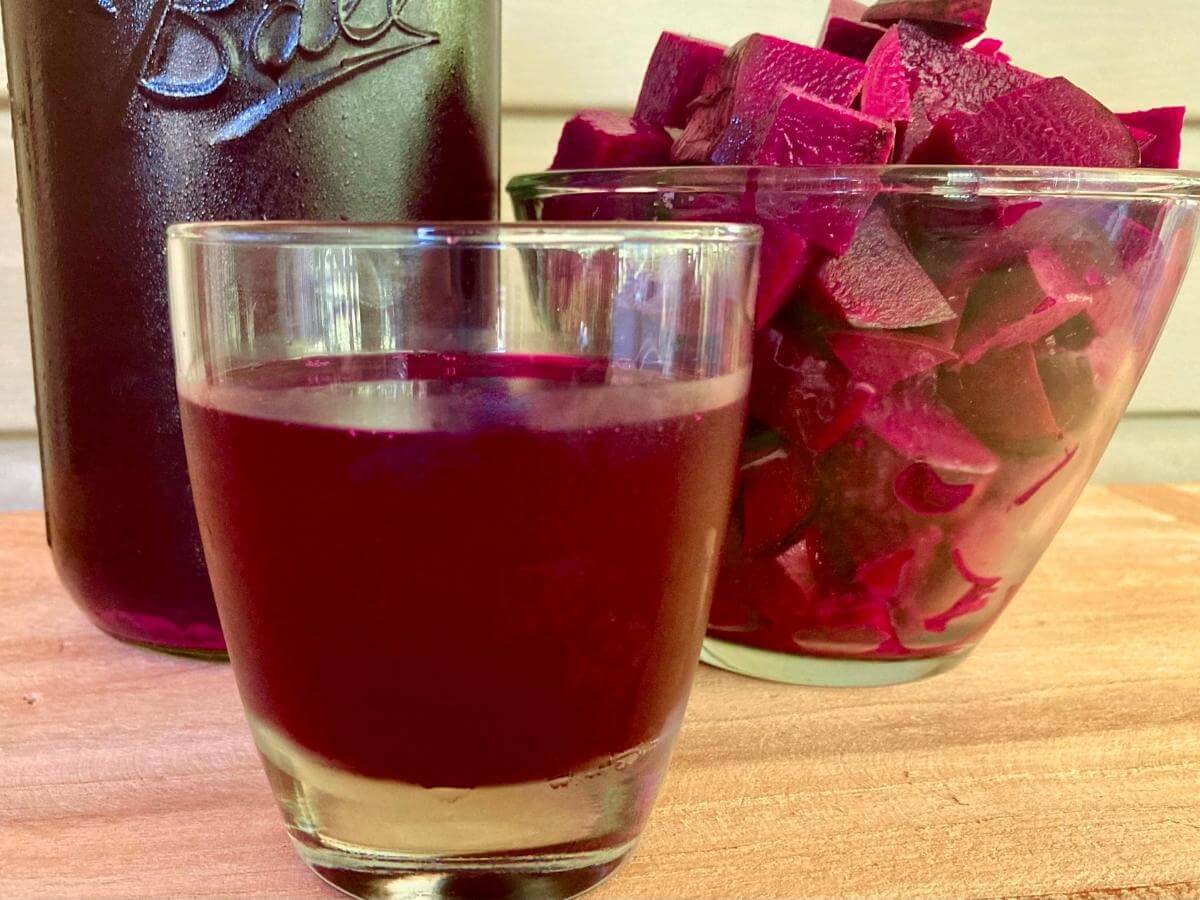
Enjoy daily as a wonderful healthy beverage!
If you try this beet kvass recipe, let me know in the comments! Tag me on Instagram @violet_rightathome
More Traditional Recipes
Fermented Cranberries in Honey – Best Cranberry Sauce
How to Sprout Beans at Home – Easiest Method
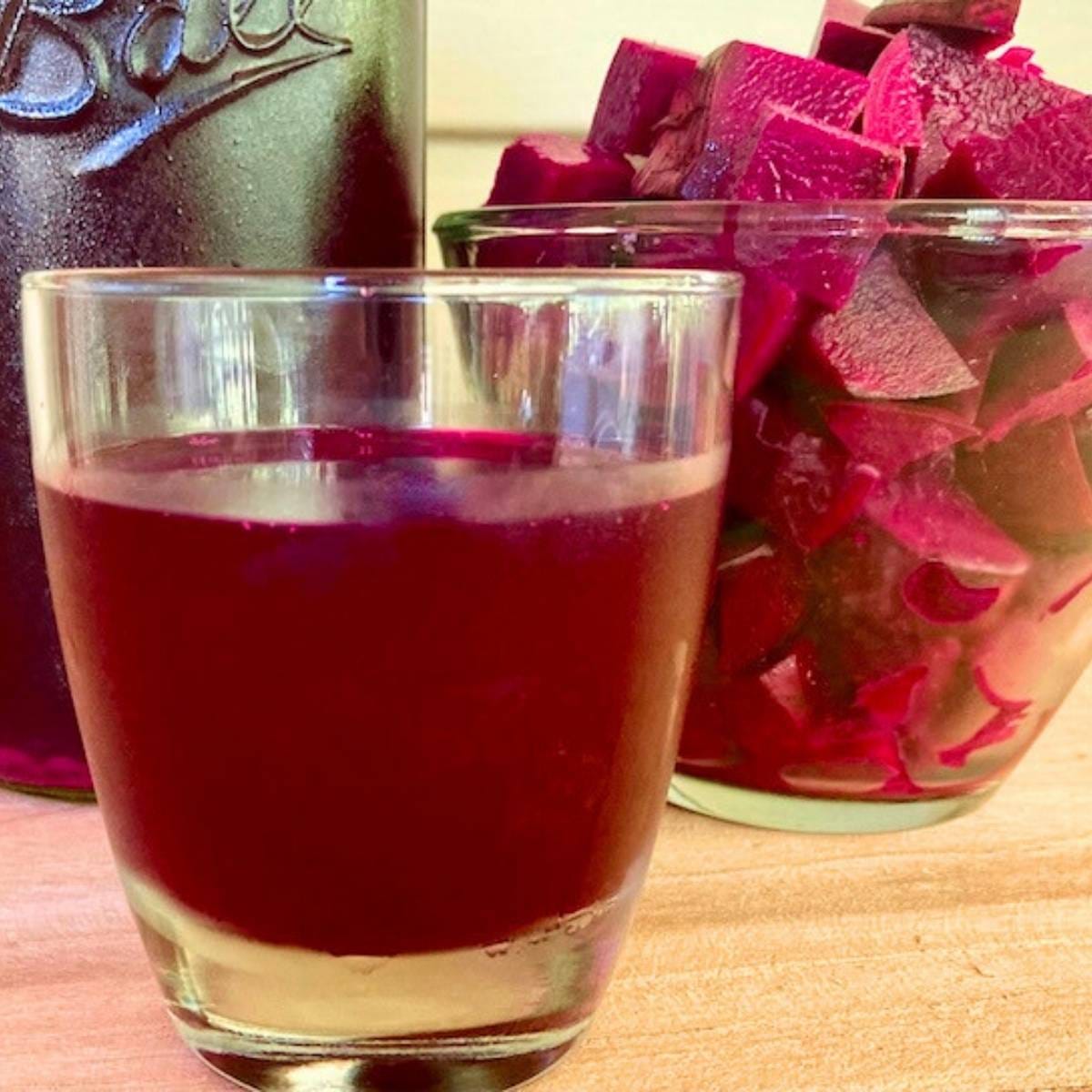
Beet Kvass
Ingredients
- 1 3/4 pounds beets
- 1/4 cup sauerkraut juice
- 3 tablespoons course salt
- 1 1/2 quarts water
Instructions
- Cut off the ends and chop your unpeeled beets into approximately 1 1/2 inch cubes.
- Add the beets to a 1/2 gallon Mason jar filling it 1/2 to 3/4 of the way full.
- Pour in the sauerkraut juice.
- Dissolve the salt in the water and pour it into the jar, leaving about 1-2 inches of room at the top.
- Screw on the lid and place the jar in a dark spot at room temperature, between 65 and 75 degrees.
- At least twice a day, slightly unscrew the lid to release any pressure caused by the fermentation process.
- Ferment your kvass for 5-10 days, or until you like the taste.
- Once the beet kvass is done, strain out the beet chunks and place it in the fridge. You can start drinking it right away or let it age for another week in the fridge so the flavors can continue to develop.
- Enjoy daily as a wonderful healthy beverage!
Notes
- You can substitute whey for the sauerkraut juice.

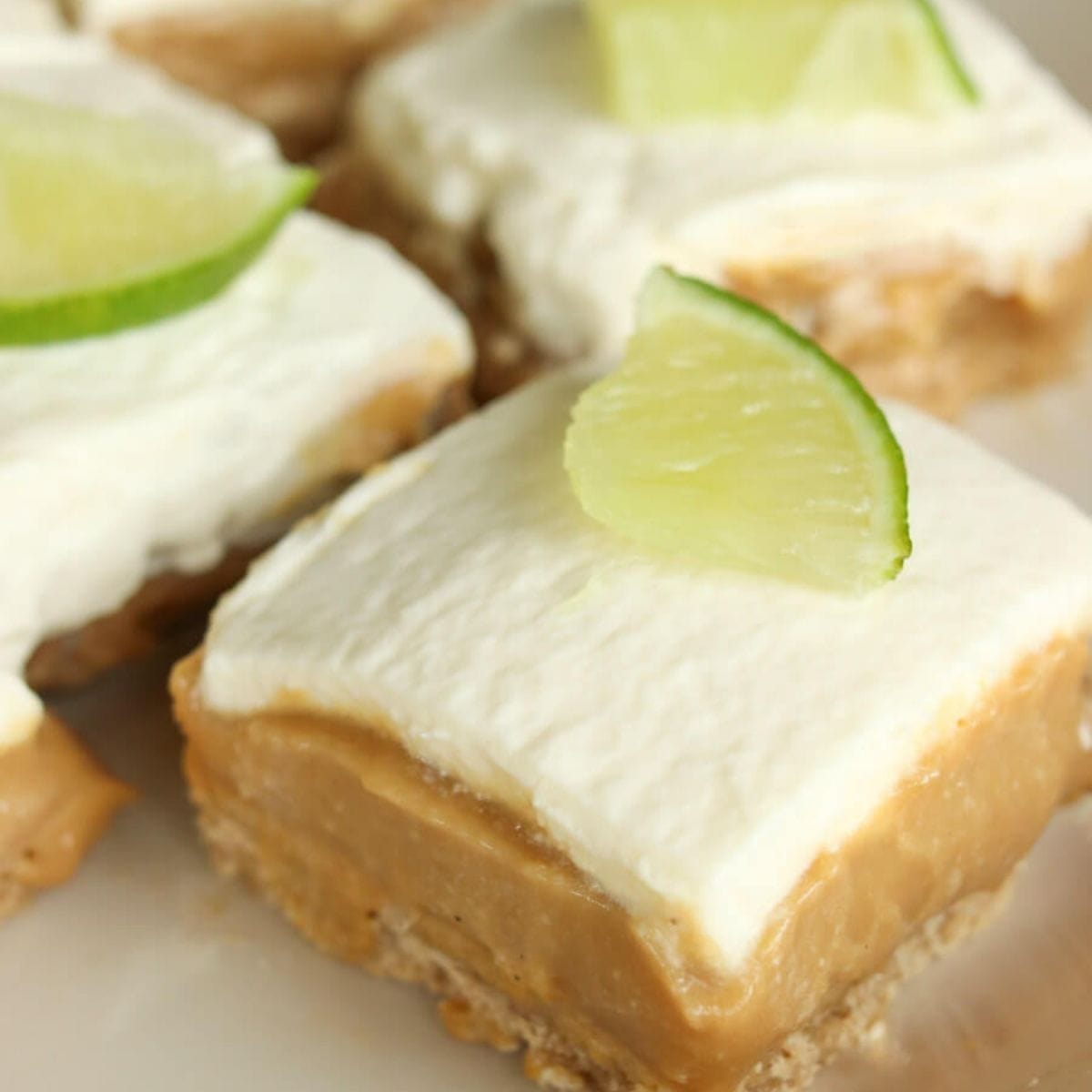
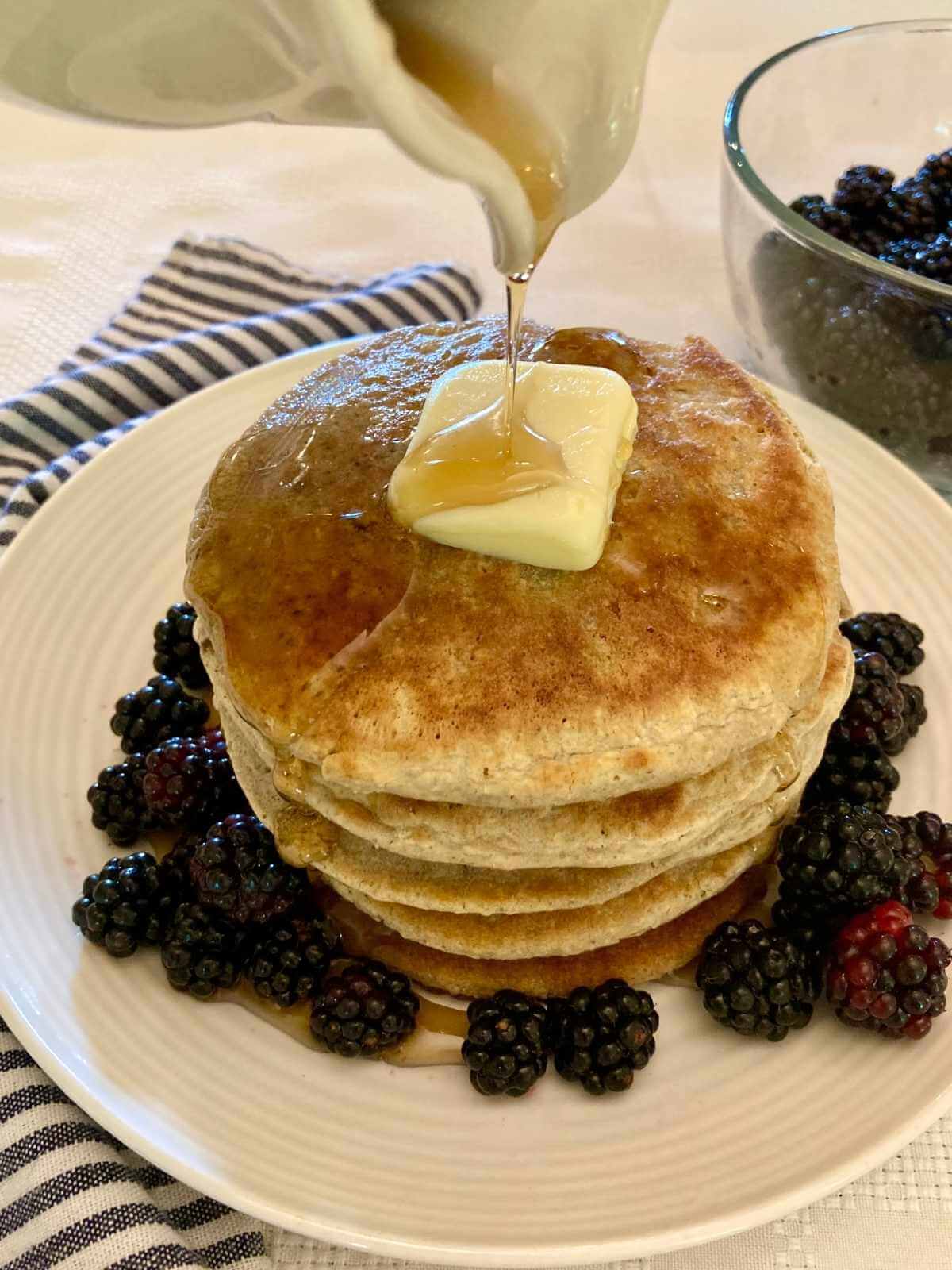
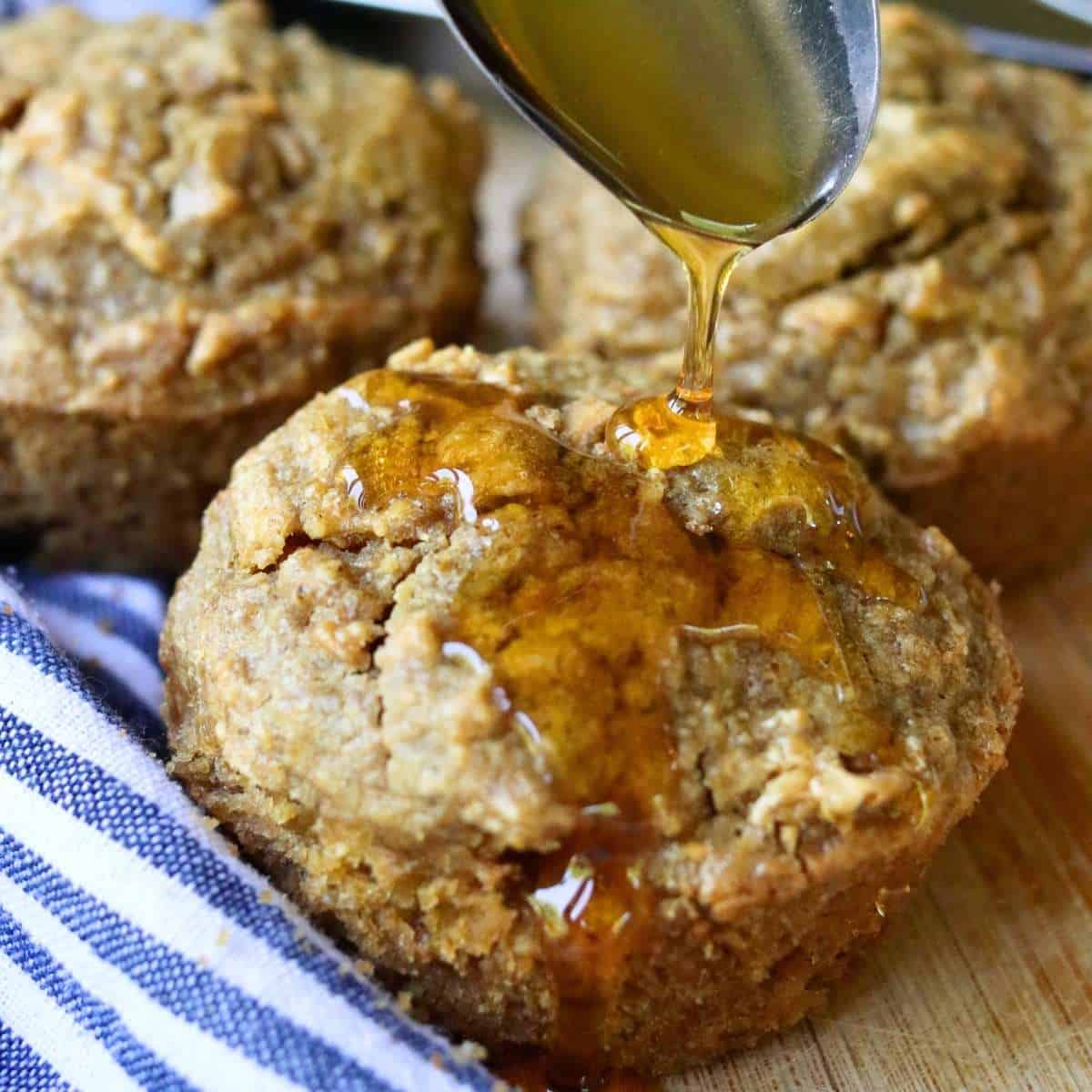
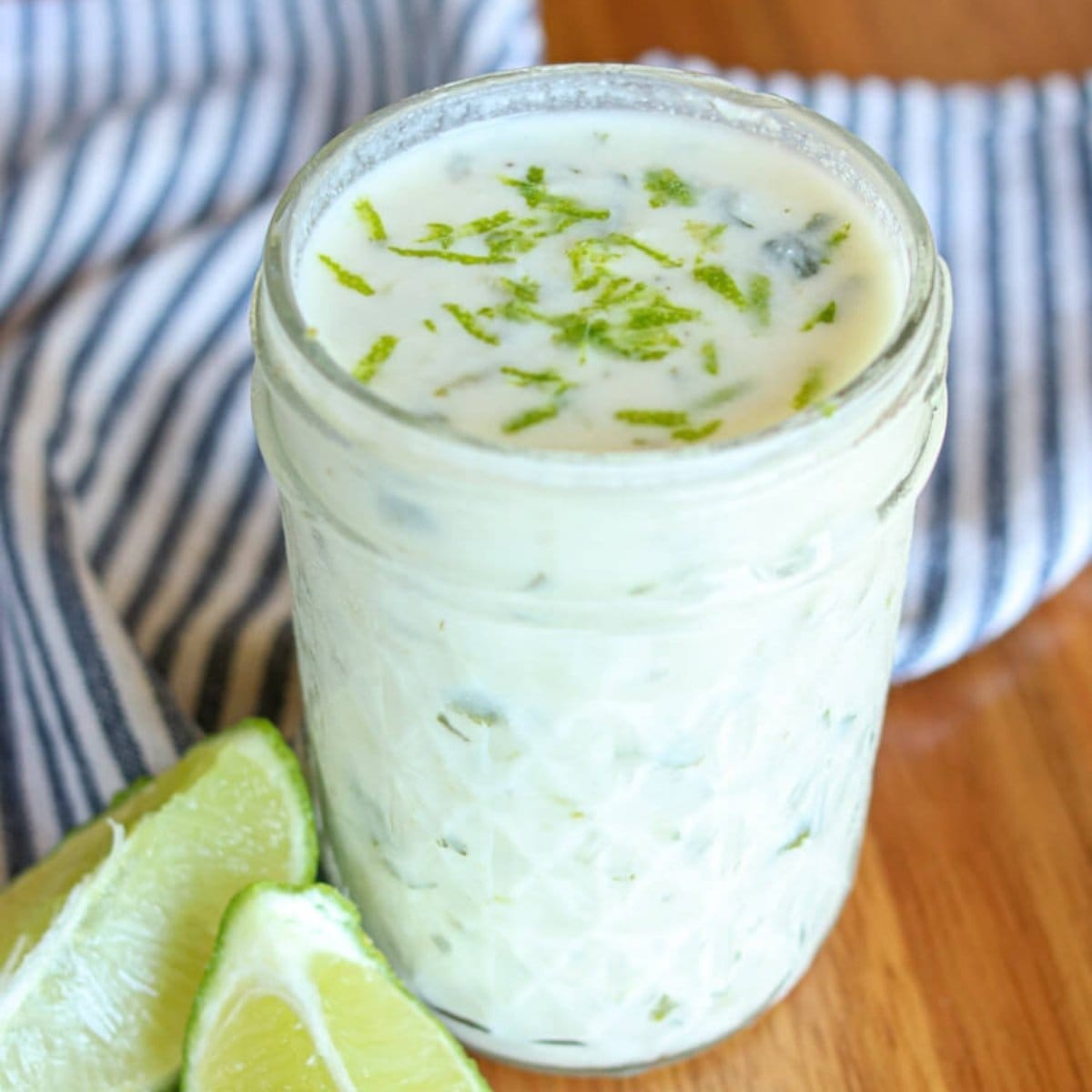
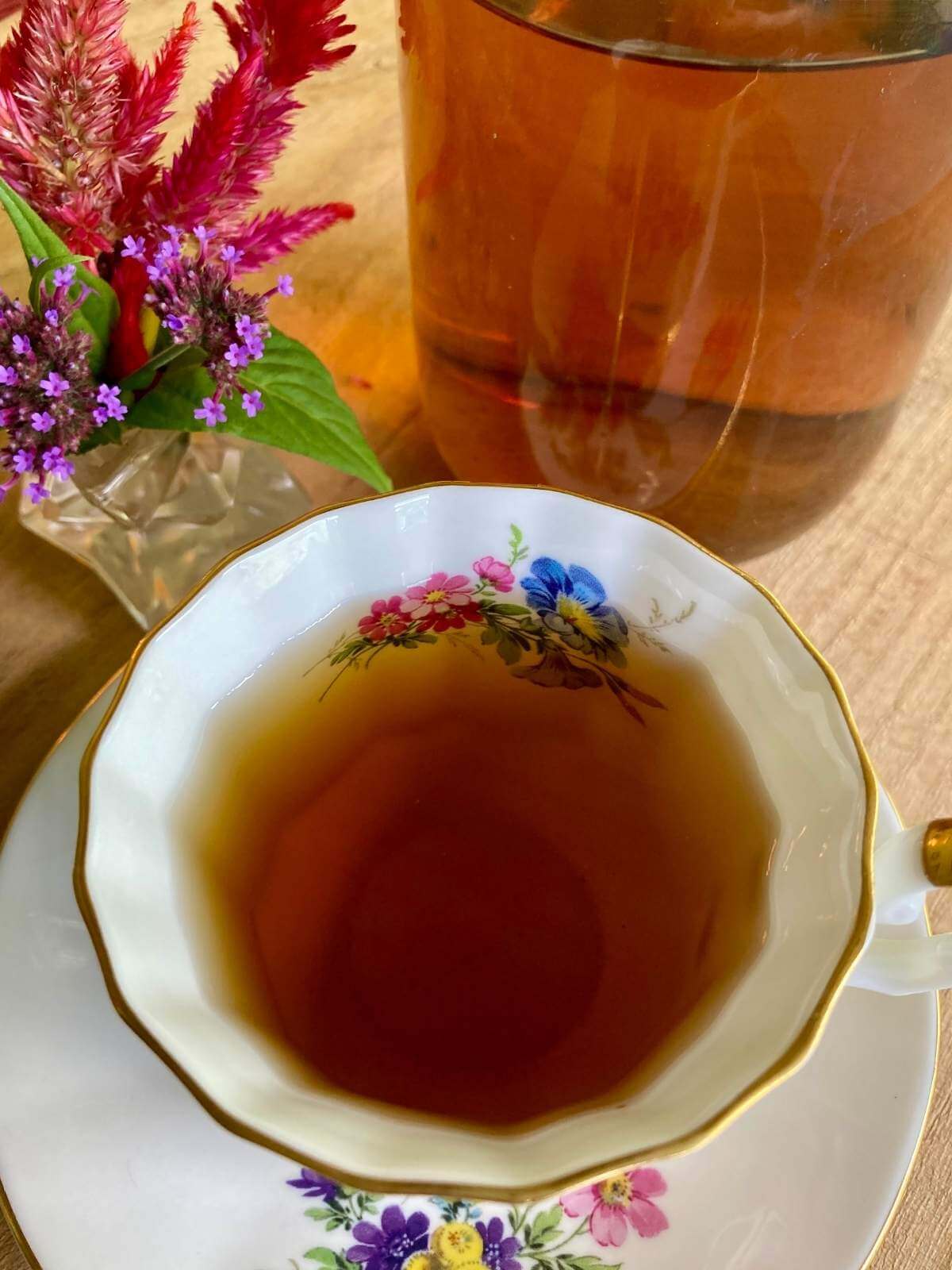
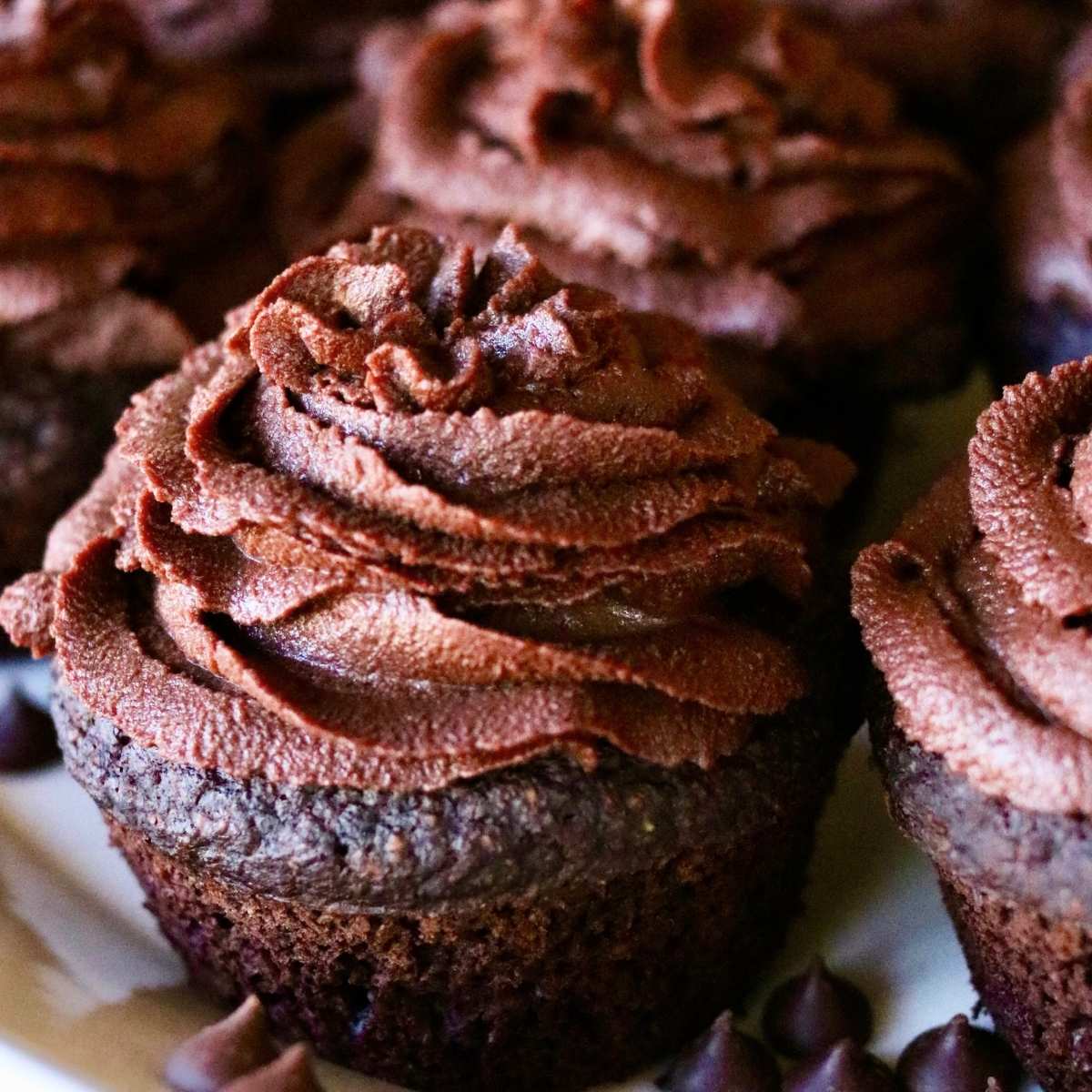
I try to always have a jar of this on hand as a health supplement!